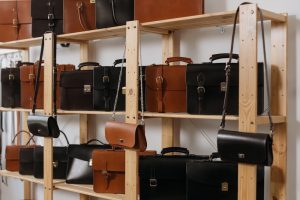In light of consumers trending away from fast fashion and into sustainability, the secondhand luxury and fashion market is expected to boom in the coming years.
The average consumer's wardrobe is made up of 25% secondhand items, according to a report from Vestiaire Collective and Boston Consulting Group. And now that more consumers have discovered the affordability and availability of secondhand goods, that number could rise. Since 2020, the secondhand goods market has tripled in size and is now valued between $100 and $120 billion worldwide.
Many buyers enter the market through designer handbags, then begin venturing into apparel and accessories. Celebrities have also endorsed this trend, as many young pop culture icons, such as actress/singer Zendaya, have been seen on the red carpet in vintage or secondhand garments.
Generally, consumers are driven to purchase secondhand goods because they're trendy and a fraction of the price of the same goods when purchased retail. Sustainability is also a primary driver of growth in secondhand luxury goods, as environmentally conscious consumers would prefer to buy animal products such as leather or furs without contributing to animal cruelty. Product variety is another key factor, as resale apps provide plenty of choices of different brands and styles.
The Vestiaire Collective-BCG report says that consumers tend to prefer to purchase secondhand luxury items in person if possible, as counterfeit goods are more common online than in other markets. However, if in-person options are unavailable or buyers are looking for a specific item, many are comfortable using websites and apps like eBay or Poshmark, which have an abundance of items at attractive prices.
Mercari, Letgo, and OfferUp are other apps with a large inventory of luxury goods. And Facebook Marketplace is also a resource for many savvy consumers, as free items in decent condition are often listed.




















